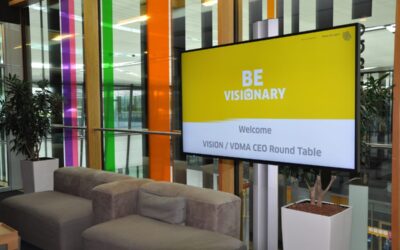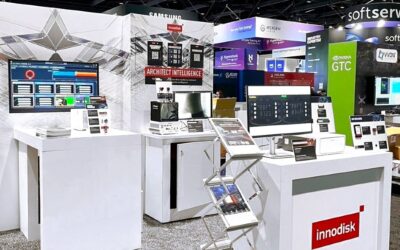Zebra introduce a new type of flow state in retail and warehousing with the right wearables portfolio. Wearable technology enables front-line workers to do more, efficiently and naturally.
Whether getting jobs done or enjoying leisure time, the ability to do things “hands free” is a welcomed advancement, thanks to Bluetooth, voice activation, and wearable technology devices. It makes multitasking more of a reality, so I can have that phone call while I prepare dinner or switch the TV or music channel even if I’m in another room.
Now, imagine the time savings, productivity and comfort to be gained if the right wearables portfolio is used by front-line workers. The way people shop has changed. It means increasingly larger volumes of picking, packing and fulfilling more orders seamlessly, made even more difficult with today’s labour shortages.
In fact, in the last two years, nine in 10 warehouse operators surveyed in Zebra’s Warehousing Vision Study cited average shipping volume increases of 23% in business-to-business fulfilment, with almost as many seeing the same average increases for direct-to-consumer fulfilment. More than half reported finding and training warehouse workers among the biggest challenges their organization faces with regards to labour.
The same study found over a third of warehouse decision-makers surveyed agree they’re more focused on outbound fulfilment challenges including picking efficiency, order fulfilment time and packing, staging and loading. Essentially, retailers and warehouses need to adapt to meet changing consumer habits as well as workers’ expectations.
Enter Wearables—Hands-Free Tech
First, what are wearables? Simply, technology we can wear. They include the futuristic looking tech that front-line workers may wear—glasses, mobile computers on wrists, ring scanners—and they’re one solution improving workflows for retailers and warehouse operators.
Their greatest benefit? Wearables allow front-line employees to work hands-free. Meaning, they remove the repetitive and time-consuming tasks of scanning barcodes while picking-up and putting-down items, moving carts, checking and rechecking devices, screens, paperwork, clipboards and more.
Those little movements add up to a lot of time lost over the course of a working day or shift taking inventory, picking, packing and fulfilling items. Wearables are more useful than ever with rising demands around order fulfilment, returns management and speed of processing. They save time for front-line workers, allowing them to do more, efficiently and naturally. They can create a new “flow state” where work feels more natural.
The Next Gen is Here
Wearables are designed and purpose built for warehouse and retail environments, aiming to equip the front-line to be more comfortable and productive in their day-to-day work. And they just keep getting better.
The first enterprise-grade wearables were introduced over 20 years ago and required a central mobile computer (often attached to a worker’s forearm) and peripherals like a barcode scanner attached to it. Now, the latest next gen wearable is just one piece—no “host” (mobile computer and/or scanner) needed, creating a new level of seamless functionality.
Like traditional wearables, the next gen can be integrated with software to remotely manage, update, check, secure, and maintain data, plus can be combined with analytics to optimise usage.
Communication and collaboration are also supported with push-to-talk technology. While smaller than previous generations, the latest wearables still deliver everything front-line workers need to increase efficiency, productivity and engagement.
Task management software can be integrated into wearables, so workers can see, record and manage tasks as they work. For example, retail associates on the store floor can wear a computer on the wrist, or a ring scanner on a finger, enabling them to complete tasks, such as scanning inventory, with both hands completely free. The screens are easy-to-read and voice activation is also an option with an earpiece and mic.
Leveraging Labour
As the demand for increased productivity-related outcomes grows, retailers and warehouse operators will continue their digital transformation, which includes wearables. In 2019, nearly a quarter of surveyed warehouse decision-makers managed operations with all paper-based or fixed workstation systems. That number is expected to drop to just 5% within the next five years as workers are augmented with mobile devices and automation solutions, including wearables.
The story is the same in retail. Nearly eight-in-10 retail decision-makers (78%) say they are under pressure to increase the efficiency of processing/fulfilling online orders. Retailers and warehouses are leaning into wearable technology: 69% of retail associates say they can provide a better customer experience by using wearable computers and 94% of warehouse workers will be equipped with wearable computers and peripherals in the next five years.
But the benefit of wearable tech extends beyond speed and efficiency. Workers want technology. Seven-in-10 retail associates say they feel more valued by their employer when they provide them with tech tools, and about 70% said wearable computers and ring scanners help them provide a better customer experience. In the warehouse, 92% of warehouse decision-makers agree technology advancement will make the warehouse more attractive to workers. And eight-in-10 warehouse workers expect the technology their employer provides to be as easy to use as their personal smartphones.
Enhancing the Mobile Ecosystem
Rising ecommerce will continue to drive the need for better fulfilment solutions in warehouses and retail stores. By 2025, 60% of enterprises will be using five or more wireless technologies simultaneously. Wearables are a win-win, enabling the front-line to work in a more productive and natural “flow state.” If you need to optimise workflows and workers, then you need a wearables portfolio.
Reach out to Paul Reed directly, and learn more about wearables here.
Written by Paul Reed, Product Manager, Enterprise Mobile Computing EMEA, Zebra Technologies
Find out more about Zebra Technologies.
Also, stay up to date with the most recent machine vision and image processing news right here on MVPro Media.





